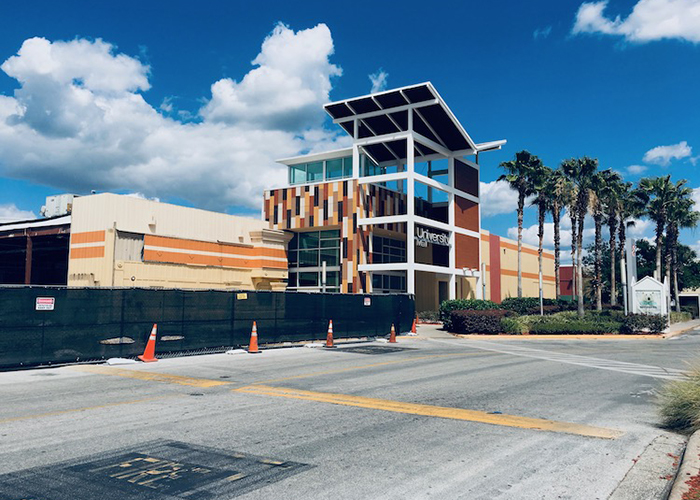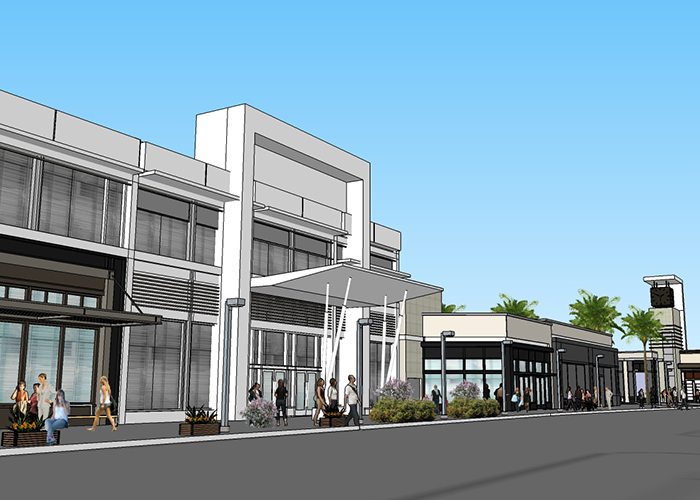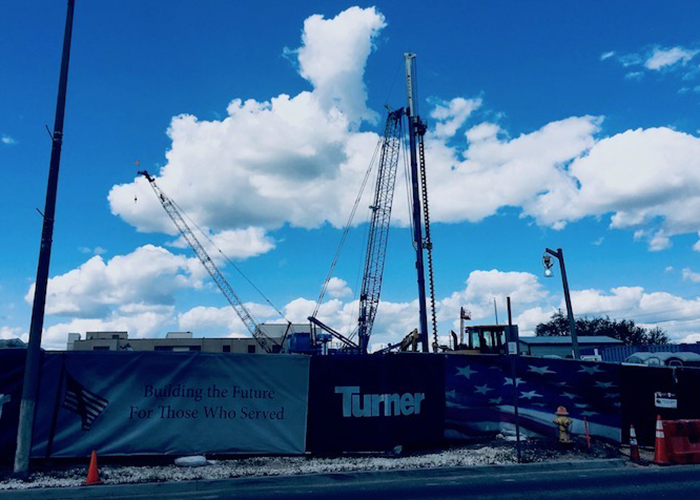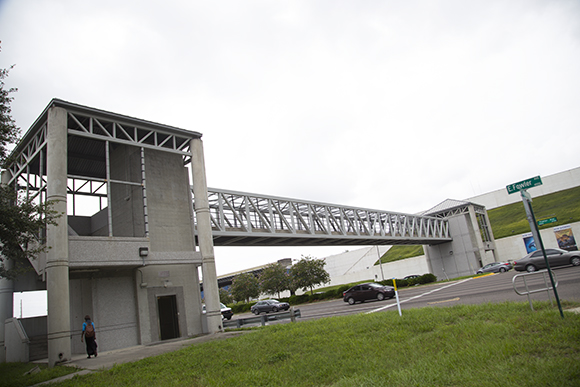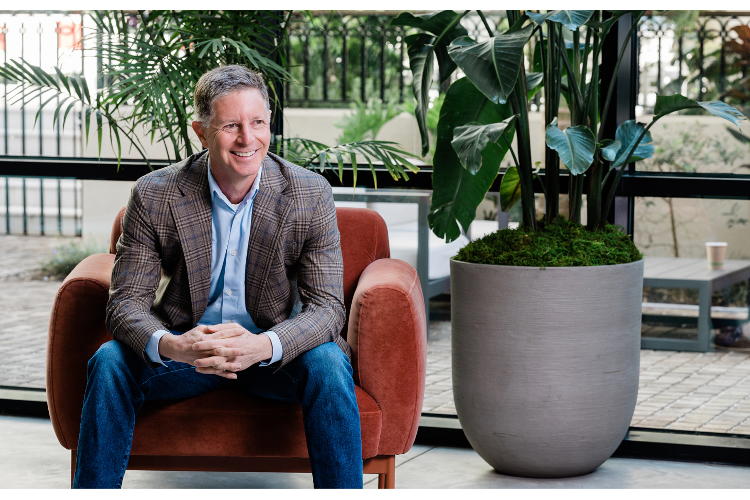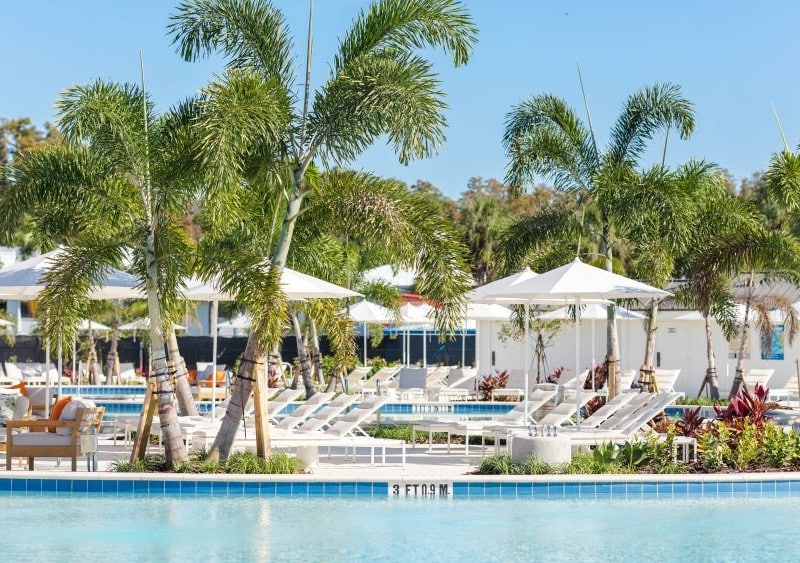What’s next for newly named Uptown District in Tampa?
North Tampa neighborhoods surrounding the University of South Florida campus are experiencing a rebirth with major new investments coming to the area now being called the Uptown District.
The plan to transform University Mall on Fowler Avenue into a research village is beginning to take shape with a new lease agreement to house USF’s Institute of Applied Engineering.
The Institute will move into a fledgling tech hub that already attracts networking events and community gatherings to a central portion of the mall as vacant department stores are now being converted into office, retail, and entertainment space.
The transformation of the area surrounding the mall into what’s now being called the Uptown District has been slowly unfolding for almost a decade.
This renovation project to spur development and end blight in the long-neglected surrounding neighborhoods is being led by !p (better known as the Tampa Innovation Alliance) and largely funded by public-private partnerships, including government funding, and resources from the University of South Florida, Moffitt Cancer Center, the James A. Haley Veterans’ Hospital, Busch Gardens, and AdventHealth Tampa.
The Uptown District covers 19 square miles bordered by Bearss Avenue to the north, Busch Boulevard to the south and Interstates 75 and 275 to the east and west. And while there are many components to the sprawling innovation district, !p Executive Director Mark Sharpe says the nexus of the entire region is the property occupied by University Mall, which sits on Fowler Avenue near 22nd Street.

“That piece of property at University Mall will become ground zero for the emergence of an innovation district that we’ve been planning for, I’d say, 10 years now,” Sharpe says. “There’s a lot of pieces that are connected to this, a story that we’re starting to tell.”
In February 2019, demolition began on the segment that once housed JCPenney, B. Dalton Bookseller, Old Navy, and Ruby Tuesday, among other retailers over 40 years. By the time this multifaceted, multi-year redevelopment project is complete, it will look nothing like the former mall.
“The mall is going to become a mixed-use live-work-play development with medical research, yet also serve as an entertainment hub,” Sharpe says. “We’ll have restaurants and shops, but we’ll also have Class-A offices. And then we’re looking at the two lakes just to the north of the mall, and we envision those lakes being cleaned up, lit with lights, and the construction of a boardwalk that would take you between the development at the mall and the [James A. Haley] VA hospital. We envision people living along those lakes, so you’d have student housing perhaps, professional housing, and then variances for hotels as well.”
University Mall may be “ground zero,” as Sharpe describes it, for the changes happening in the Uptown District. But the potential being unleashed at the mall is just the beginning.
“What we’ve seen in the past is that each of the anchor institutions, they’ve been doing an awful lot for 30 years, 40 years. I mean a lot of growth. We’re now tieing it together,” states the former Hillsborough County commissioner and native of Tampa.

“So, what’s important is that we bring it all together, and that’s now encouraging others to begin to think about, ‘well then, what might they do with their property nearby?’ So, of course, you have the Yuengling property with 40 acres sitting right there. You have Pepsico right to the north of Yuengling. You’ve got a lot of large parcels that are nearby.”
He even points to the 80-acre Museum of Science & Industry (MOSI) site on Fowler across from the Yuengling Center (formerly the USF Sun Dome). “What’s going to happen with MOSI?” he poses. “Let’s bring it together in a conversation about the properties, and you begin to think about the creation of a city.”
The main drag runs through it
Fowler Avenue runs straight through the middle of the Uptown District. Spanning from Florida Avenue near Forest Hills to the west all the way east into Thonotosassa at U.S. 301, the eight-lane corridor is a pipeline not just for commuters but also for commerce. Like University Mall, businesses along Fowler Avenue — named for a Temple Terrace pioneer family — are undergoing major changes. New restaurants, medical facilities, and retail outfits are either renovating existing facilities or building new locations along Fowler Avenue at a pace not seen in two decades.
Meanwhile, the leadership at !p and the Florida Department of Transportation (FDOT) are teaming up to reduce traffic congestion, increase mobility for pedestrians, and enhance access and safety along the corridor for all commuters.
“Presently, [Fowler Avenue] is a path for people where they move as quickly as they can through it, though many people use it to get to Moffitt Cancer Center, USF, or Busch Gardens,” Sharpe notes. “We envision it as a destination road – for people to use it to come to a destination and stay. That’s why it is so important for making it safe for pedestrians and motorists and attractive to businesses.”
One way the partners involved with the North Tampa redevelopment efforts would like to enhance Fowler Avenue is to mark it as a real gateway corridor into the innovation district.
“We want to light that road up,” he says. “We’re working now with Tampa Electric and the Florida Department of Transportation to light up the underpass of Fowler and I-275. We want people to be aware they’re entering this innovation zone, and they’re coming down this pioneer corridor, this innovation corridor.”
He also sees similar enhancements along Bruce B. Downs Boulevard.
“So, we’d have an east-west corridor [Fowler Avenue] and a north-south, and that, of course, is very important to us because we have Advent Health, the VA hospital, USF, and the mall redevelopment all sitting right along Bruce B. Downs.” In addition to under-bridge LED lighting at the major interstate overpasses along Fowler Avenue is improved pedestrian lighting and enhanced crosswalks.
A big step in making roads safer for motorists, pedestrians, and cyclists is to reduce congestion, a problem for major thoroughfares such as Fowler Avenue and Bruce B. Downs. One solution to easing the traffic is the implementation of a circulator transit system that takes people around the innovation district without them having to rely on personal motor vehicles.
“Our goal is that when people come to the university, they don’t have to get in their own car to get from point to point nearby,” Sharpe remarks. “They can use the service. Over time, we’d like to see less traffic, and we think it will help us with congestion.”
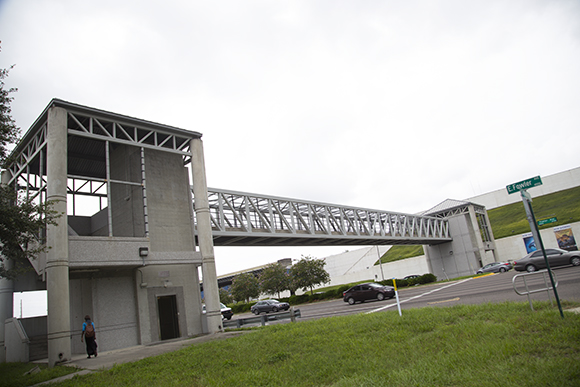
FDOT Metropolitan Planning Administrator Stephen Benson says that while efforts are underway to ease traffic and make motorist and pedestrian safety improvements throughout the Uptown District, the enhancements will primarily be seen along Fowler Avenue.
“The USF area is that central point between Pasco County and downtown [Tampa], and it sits right in the middle of two major destinations with heavy traffic both in the morning and in the afternoon,” Benson notes. “When we began having conversations with Mark Sharpe years ago talking about the ideas for development and growth, we thought we should partner together to make improvements to Fowler mainly to help enhance transit opportunities. We were looking at Fowler as a major transit hub and, as most studies do, this one has changed and evolved as time went on. And, as the plans for the innovation district changed and evolved, we wanted to adapt to those same plans.”
He says years of studies, both of Fowler Avenue itself as well as traffic patterns along the corridor by motorists, cyclists, and pedestrians, has led to the creation of an intermodal transit plan that is being incorporated in the context of a regional plan.
“This is a heavily pedestrian-used area, especially on the west side of Fowler, with a lot of incidents of pedestrians getting hit by cars,” Benson notes. “Surprisingly this is not so much the case immediately around USF, but as the area grows that becomes a bigger risk as well.”
Enhancements such as crosswalks outfitted with overhead traffic signals are one pedestrian-safety component seen along other major Tampa arteries such as Hillsborough Avenue, but Benson says the solutions coming to Fowler Avenue go beyond that.
“A lot of folks in the USF area think the pedestrian problems along Fowler Avenue are a tougher nut to crack. It’s a heavily congested eight-lane road, and we need to look beyond short-term fixes.” Among the many safety enhancements made to Fowler Avenue in the past couple years include new bicycle lanes and the installation of adaptive “smart” traffic signals that can sense vehicles at certain spots and adjust cycles.
“One of the things Mark Sharpe has asked us, for those who want to partner with us, is to refer to this area as a laboratory. We see the Fowler corridor exactly as that. As a place to test out connected vehicles, smart technology. … We want to use this corridor as an area to develop new technologies and roll out new, futuristic transportation solutions,” Benson notes. “Fowler is a busy thoroughfare for motor vehicles and increasing pedestrian activity with future mass transit opportunities. So, how do we work all of those components together? Mark wants us to bring together a lot of new ideas and implement them on Fowler Avenue.”
A shopping list of new concepts for University Mall
RD Management LLC bought University Mall in 2014 and in short order secured upscale dine-in movie theater Studio Movie Grill and more recently oversaw the development of new restaurants Portillo’s and Miller’s Ale House, as well as Race Trac gas station.
“It’s a key piece — a catalyst — for what’s happening in this area,” says Sharpe. But he adds a critical caveat: “It’s no longer going to be a mall.”
Christopher M. Bowen, RD Management Chief Development Strategist, is guiding the mall’s transformation. Among the changes is an 80-foot-wide swath that was recently mowed through the mall’s west wing, disconnecting the former JCPenney building from the rest of the mall structure.
“Essentially, this work is the start of a walkable, mixed-use urban neighborhood concept and plan that will eventually flow throughout the approximately 100-acre site and become the foundation for a live-work-play ecosystem necessary to integrate, connect, and support the various aspects of the Uptown development’s anchor, life sciences and tech research and development community,” says Bowen. “The recent demolition work will make way for a new streetscape incorporating best practices in walkable urban development and providing new shopping and dining experiences.”
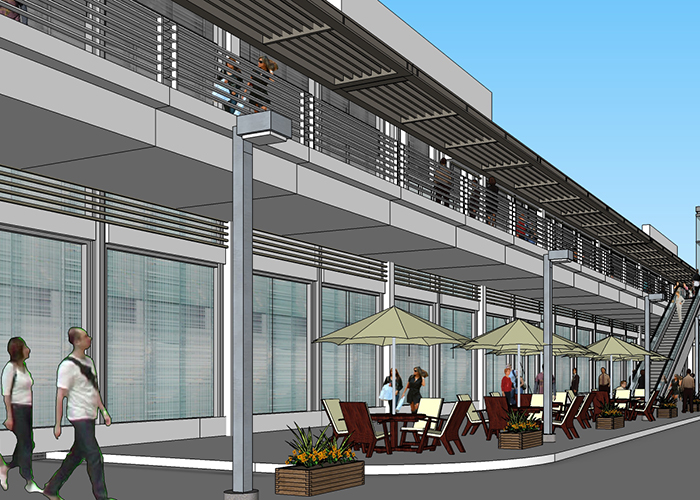
The new promenade will connect various parts of the new development, including the Studio Movie Grill, multi-story apartment building, a lakefront walkway, the property’s existing 1,539-car garage, and the former JCPenney department store, which will be converted into a new 160,000-square-foot Class A office building.
Demolition of the mall’s western corridor marks just the beginning of the property’s redevelopment.
“There will most likely be additional demolition work taking place on the site over the next several years,” Bowen says. “When it makes sense in relation to our overall vision for the development, we will take down certain portions of the existing mall structure. It will be a very precise, methodical, and planned process, and we will make sure that the ongoing operations of our businesses and other groups working onsite are not negatively impacted.”
Among the portions of the mall that may be gone in years ahead is the two-story structure once occupied by Sears, which closed in late 2018 and was the mall’s last original anchor tenant. (A nearby Sears Automotive remains open.)
“A very good case could be made for taking down the vacant Sears department store and its companion auto center to clear way for significant, ground-up development that is fully integrated with the overall 100-acre development and fully leverages all of the attributes of the USF campus, the medical district, and the growing tech center.”

He sees an abundance of opportunities for the 18-acre site running from Fowler Avenue to the south along Club Drive to the lakes dividing the mall from the VA hospital campus.
“University Square Drive, a private street, connects the Sears side of the mall property to the west entrance of the USF campus, which, if you include Bruce B. Downs, is a distance of approximately four or five city blocks,” Bowen says. “This is a very strategic tract of land, considering its location within one of the largest, if not the largest, medical districts in Florida, its adjacency to the VA hospital – the largest most sophisticated rehabilitation medical center in the world, and its very close proximity to USF’s main campus, which is one of the largest public universities in the nation.”
Approximately 50% to 70% of the mall structure’s existing 1,300,000 square feet will remain when the Uptown development is fully realized.
“Keep in mind that all of that space was designed for one single use. Retail,” he says. “Of that, approximately 60% to 70% is in some form of active use at the present time. The remainder of the space and the site it rests upon is being held to accommodate future development, which would include adaptive reuse – from retail to research and office use – of valuable existing structures, like the two-story, 200,000-square-foot former Dillard’s department store box, with 17-foot ceiling heights, connected to the parking garage and the center, two-story mall galleria.”
He further adds there may be demolition of a less-valuable, single-story space to accommodate new, multi-story, mixed-use development. With the project expected to span a decade, the scope of the redevelopment is all but certain to evolve along the way.
“It’s interesting to note that, due to the large scale of this mixed-use development, at the end of the day we will probably have more retail under lease onsite in a variety of existing new, mixed-use buildings than we do today.”

Ultimately, Bowen says the “true anchor” of the redevelopment site will be office-related uses, along with hotel, hospitality, conferencing, and residential amenities. “But retail will still be respectable in terms of offerings and square footage leased – most likely well in excess of 500,000 square feet.”
He says the more than 100 shops, technology players, entertainment venues, and community organizations already in existence at the mall property provide a vibrant spirit and soul to the site.
“That entrepreneurial and innovative spark, as well as our commitment to the community, is what we hope to sustain and carry forward into future phases of development. We want to build around that positive energy, incorporate it into our development, and celebrate it!” Bowen exclaims. “It’s the ‘X’ factor that top researchers and innovators are looking for in their daily lives. It’s what will bring them to Uptown and why they will stay.”
New park space a priority, too
Among the 7.2-million square feet of development capacity at the University Mall redevelopment site is the opportunity to introduce something the North Tampa community currently lacks: parkland.
“One of the sad facts about our neighborhood is that we pretty much have no parks. None!” Bowen observes. “I hope that we can help change that fact over the years here, especially along Fowler Avenue from I-275 to Bruce B. Downs and the neighborhoods behind it. Great parks and gathering places make great cities and neighborhoods, and they also increase land values, spur economic development, attract investment, reduce crime, bring neighbors together, improve safety, enhance health and wellness, and so on and so on.”
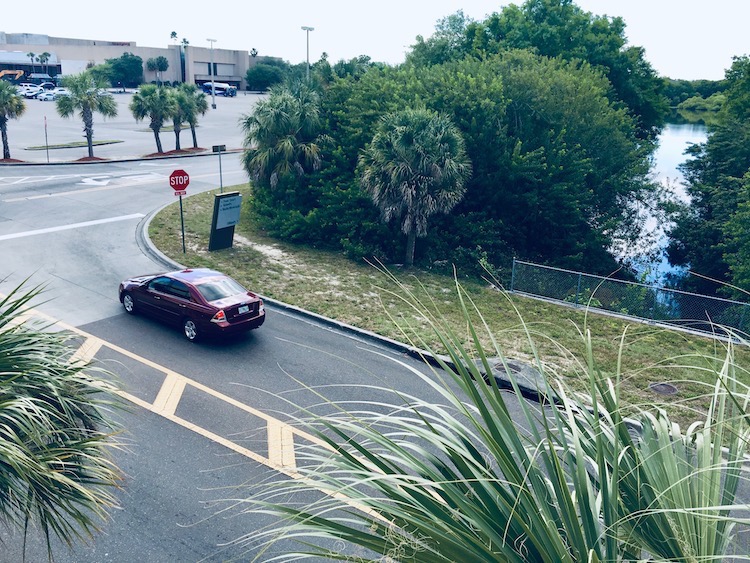
The two lakes on the northern edge of the mall property, already envisioned as the picturesque backdrop for possible new housing or hotel opportunities, are also central to plans for new parkland in the Uptown district. The lakes, connected underground, are part of Hillsborough County’s stormwater management system for the surrounding area.
“However, the lake frontage is so overgrown that most people don’t even know they exist, even when you drive right past them. If you peek through the brush and scrub, you’ll see that they are gorgeous and full of life,” Bowen notes. “We plan to work with Hillsborough County, whose staff and elected officials have been exceptional partners and a great resource to our team, to redevelop the lake frontage in a way that supports and respects the natural aspects of these wetlands, but also lets our community and the Uptown development enjoy them as places of respite as well as places to gather and enjoy one another.”
He says the frontage on the lakes is slated to become part of a greenway trail system that will launch from the current mall site and flow east and west toward I-75 and I-275, respectively, and beyond. “In addition to walkways, pocket parks, and gardens, we would hope to have gatherings for music, art festivals, farmers markets, charity events, and whatever else our community can come up with. It’s a start, and it may just, hopefully, catch on and lead someday to turning Fowler into ‘University Parkway’.”
The greenway trails will allow for greater pedestrian and cyclist use and may also see the construction of a parallel shuttle way along the back lake on the east side of the property to connect the VA hospital to the Uptown redevelopment.
“This enhanced connectivity would provide additional opportunities for continued growth and development, not just for the VA hospital, but also for our medical district and technology corridor as a whole.”
Building the future for those who served
Just to the northeast of University Mall, James A. Haley Veterans’ Hospital is undergoing some major overhauls of its own. The facility, opened in 1972, is being expanded with a new bed tower. The project, the first of its kind in which the VA is partnering with the U.S. Army Corps of Engineers, broke ground on July 31, 2018, and should be completed in time for the hospital’s 50th anniversary in 2022.
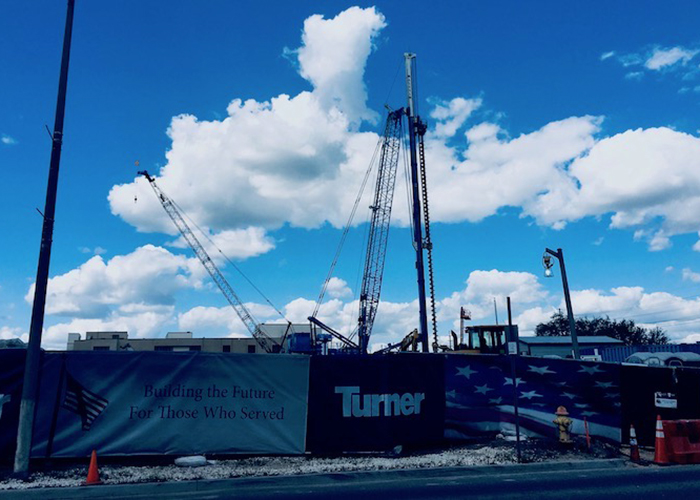
The new tower is being built by Turner Construction adjacent to the Community Living Center (Haley’s Cove) and is slated to include five floors with 96 medical-surgical single-patient rooms, 40 intensive care unit beds, a canteen and outdoor dining area, healing gardens, and other supported spaces. Meanwhile, the pedestrian bridge between the VA hospital and USF was partially demolished to accommodate the construction of the new bed tower and will be reconfigured to offer a new connection point to the addition and a continuous passageway to through the tower to the main hospital building.
Other work at the VA hospital includes renovations to Floor 5 West of the main hospital that decompressed four-patient bedrooms to two-patient bedrooms and created 14 single-patient private rooms on the medical-surgical unit. Upcoming projects include construction of the Juliet parking lot off of 131st Avenue for hospital employees and University Mall park-and-shuttle to alleviate traffic on the campus and improve traffic safety by creatively using existing space around the hospital. An expanded specialty services facility will add 13,800 square feet for two additional interventional radiology suites and a wound care center expected to open in 2020.
All of the projects mean improved services for local veterans and more employment opportunities in the Uptown District.
“We’ve already added some staff to support the bed tower,” says hospital spokeswoman Shayna Rodriguez. “It’s too soon to know how many new staff members we will have when the new bed tower is complete, as we have not yet done a manpower analysis. The construction project has also led to contractors, U.S. Army Corps of Engineers, and VA staff already bringing income to our community as they are leasing parking from the mall, all need housing, food, etc.”
Hospital Director Joe Battle is on the !p Leadership Board and is working on some of the projects designed to beautify the Uptown District, including the greenway project connecting the hospital and the University Mall redevelopment site.
“We are continually striving to improve both our services and our facilities for our veterans and employees, and we’re thrilled to partner with !p to beautify and enhance our surrounding community,” says Battle. “We’ve been here since 1972 and we look forward to the Uptown District evolving into a more welcoming space for our staff and visitors.”
Moffitt Cancer Center expands to meet future demand
Moffitt Cancer Center has been in virtually continual expansion since opening its doors off Magnolia Drive on the USF campus in 1986. Designated by the National Cancer Institute as the only Comprehensive Cancer Center based in Florida, Moffitt has undergone several expansions in the 1990s and 2000s; the original facility is now essentially landlocked and can only grow upward.
To help better serve populations spread throughout the Tampa Bay Area, Moffitt has also built satellite locations elsewhere around the region. Among these newer facilities located off the USF campus is a complex just south the USF campus on McKinley Drive that opened in 2007 and became one of the catalysts for the growth of the medical corridor now at the core of the long-range plans for the Uptown District.
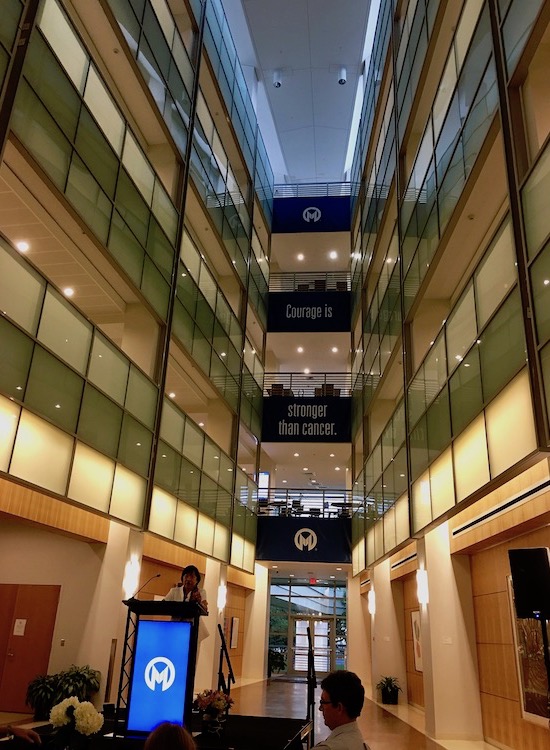
“The building that opened in 2007 was originally designed for M2Gen,” says Moffitt Chief Operating Officer Jack Kolosky of Moffitt Genetics Corporation, the hospital’s for-profit health informatics solutions subsidiary focused on the discovery, development, and delivery of genetic and molecular profiling technology also known as precision medicine. The mission at the expansive complex on McKinley Drive between Busch Gardens and USF is to help develop genetic-based treatments for specific patients. “It is still going very well,” Kolosky says.
The complex on McKinley is also home to Moffitt Cancer Center’s Richard M. Schulze Family Foundation Outpatient Center, a unique facility that opened in 2015 and is providing a variety of oncological services.
“We took some of our outpatient clinics and surgeries from the Magnolia (USF) campus to Schulze,” Kolosky explains. “These include cutanea [skin] and breast cancer clinics, diagnostics, and other services.” He says the Schulze center really helps connect Moffitt and its suite of medical services to the greater community by being “open, accessible, and designed by patients.”
Meanwhile, cranes rise high above the original Moffitt facility on the USF campus. The construction led by Gresham Smith at the Moffitt campus at USF is for a new eight-story clinical support building.
“It’s substantial and is designed for faculty and labs,” Kolosky says of the 200,000-square-foot building expected to be complete in early 2020. What’s ahead for Moffitt? “We are looking at what our bed needs are,” Kolosky hints.
Indeed, accommodating more people is necessary in a place such as the Uptown District, much of which is built on the precept of serving up the latest in science and technology to the masses.
“The number of people who come to North Tampa is pretty remarkable. At Moffitt, we serve people from every county in Florida, every state in the Union, and many nations around the world,” Kolosky says. “All of us in the Innovation District are economic engines in our own way, such as at USF, Busch Gardens, the [Haley] VA hospital. I think what our district is looking for is funds to help us continue growing and make a real impact not just in the Innovation District but across the entire Tampa Bay Area and beyond.”
Background: The retail hub, formerly known as University Square Mall, opened on August 15, 1974, and for some two decades served as a premier suburban mall before several anchors and other major tenants either moved away to farther-flung shopping centers or suffered significant financial hardships at the corporate level. University Mall underwent massive renovations in the mid 1990s and saw a significant facelift in 2008, yet neither project helped to recapture the booming crowds of shoppers or the gleaming portfolio of A-list tenants once seen at University Mall in the 1970s and ‘80s.

